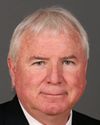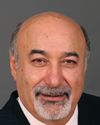If we don't have enough military aircraft or ships to project our own force, then I can go through contracts and coordinate the whole movement of the force that has to be projected overseas.
When we go in theatre, the key is to activate that theatre. We call this a “theatre activation”.
Imagine it's a city. Most often that location has been quite devastated, either by war or a disaster. We go in, and we have to make sure that our soldiers have a roof; that they have water and electricity; that they have their stores, through their warehouse; that they have a medical facility; that they have the proper policing, security, and detention facilities; that they have the maintenance bay--the garage, if you wish; that they have the communications network in theatre and back to Canada; and that they have personal services, like a gym, a Tim Hortons, and things to that effect.
When we go in we try to establish this to make sure our soldiers are going to be well taken care of. That's what we call theatre activation, and my people are quite involved with it.
Then the forces come in with a national support element. They go rotation by rotation, and they can stay in that theatre for as long as we wish. I don't get involved after that, except just to monitor.
When they do that, I'm involved in terms of the pipeline, if you wish, between Canada and the theatre. The theatre can be in Canada, but in this case we're looking at Afghanistan. So how do we do the sustainment from Canada? What is that pipeline? What is this lifeline of equipment, materiel, personnel, repatriation of remains, repatriation of casualties, and so on? It's a flow back and forth between Canada and the theatre. It's very much a national issue, and I'm responsible for making sure this pipeline works well for all of those different resources.
If the government decides afterwards to close a theatre, then I send my expert back to that theatre and we do the drawdown and closure of that theatre, and make sure that proper remediation is done.
So grosso modo, this is where I'm very much involved with operations. If you look at Afghanistan right now, the theatre is well established, so I'm not involved in sustaining, supporting people in the theatre, but I'm very much involved with the lifeline between Canada and that theatre, supporting Lieutenant-General Gauthier, commander of the Canadian Expeditionary Force Command, in making sure that things go well and we're well connected.
Slide No. 8
shows you the overall Canadian Forces support construct, which has changed. We used to have units and formations, embedded with the associate deputy minister role, that were providing support. With the new construct, those formations and units have come mostly under my command, so we now have a military commander who makes sure that the service delivery, the way we support our own forces, is under only one umbrella and that it provides all the different support functions that we see in a theatre of operation. This frees up the associate deputy ministers to really focus on strategic guidance, procurement, and all of the strategic issues that they have in their realm of responsibilities.
You see at the bottom of the diagram that we provide support not only to forces like those in Afghanistan--the Expeditionary Forces Command--but also to forces in Canada Command, or to the Special Forces Command, which sometimes has specific missions directly for the Chief of Defence Staff. That gives you the overall construct.
On slide number seven, we see the capability thrust on the top, which we have just discussed. What is key for you are the functions at the bottom. You can see the types of functions that really report to me, and which I take care of at the theatre level, reaching back to Canada. We're looking at the engineers, for vertical and horizontal construction. We're looking at the logistics, the distribution system, the warehousing, and so on. We're looking at maintenance, especially to bring back the damaged vehicles and bring forward the replacements. We're looking at health services, primarily at the high level--we call it row three, for example, in Afghanistan, which is an advanced surgical centre--and things to that effect.
We're looking at communications, and very much at the strategic link between the theatre and Canada, which is based very much on satellite communications. We're looking at contactors. We have a contract called CANCAP, which reinforces our people and the theatre to do that. We're looking at personnel support, like the Tim Hortons we have over there, the gym facilities, and so on. These are the types of functions. At the far end we have the military police, so we're looking at detention. In the case of Afghanistan, we call it a process facility, which we are making sure works well. These are the types of functions for which we set up the theatre, and which we then monitor and sustain from here in Canada.
In the last slide, you see the organization. It's not only the headquarters here in Ottawa; it's also a command that has units and formations. From the left to the right at the bottom, you see that my primary formation is the joint support group, and this group is in Kingston. Under this group we have so-called purple units, those units that have army-navy-air force functions within them. Those units are, for example, the 1 Engineer Support Unit , which is in Moncton. We have the 4 CF MCU movement unit in Montreal; the 3 Canadian Support Group--3 CSG--also in Montreal. These are all logistics units. And we have the Canadian Forces Postal Unit that is in Trenton. All these units are really purple and support operations from here.
The second box is called the Joint Signals Regiment. It also focuses on joint responsibility--so purple responsibility--focusing on the communication network between the theatre and Canada. That unit is in Kingston. The third one is the Canadian Materiel Support Group. This group has all of the ammunition depots and supply depots we have here in Canada. That allows me to have the end-to-end process of the supply chain from here to the theatre, which is a great enabler.
The next box after that is the health services. They have been centralized from a Canadian Forces perspective, and they are under my operational control for supporting operations everywhere in the world. The next box is the communication reserve, which is a reserve entity that reinforces the Joint Signal Regiment from Kingston in establishing the proper communication network. Then we have people who are responsible to me, especially the Canadian Forces provost marshal, who makes sure all of the functions, including the military police, are part of this organization.
This gives you a quick look at this command and at what we are all about. It is a new organization. We are still maturing, as I said. We are trying to be a learning organization, and we're getting great insights from the current mission in Afghanistan and trying to evolve from there as a learning organization.
I have a limited focus at this time. It is supporting the theatre, sustaining that theatre, and reaching back here to Canada.
At this point I am ready to answer your questions with regard to my area of responsibility, while remaining in the non-classified domain.





